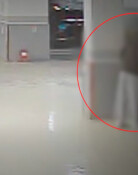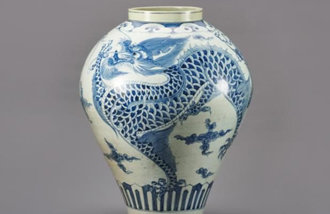Culled livestock buried in tap water reservoir basin
Culled livestock buried in tap water reservoir basin
Posted February. 15, 2011 10:06,
Burial sites for livestock culled due to foot-and-mouth disease have been created inside a tap water reservoir basin in the upstream Han River, the source of drinking water for 25 million residents in the Seoul metropolitan region.
Fears are rising that leachate from the sites could cause secondary pollution in a drinking water source.
The Dong-A Ilbo gathered Friday and Saturday information on the burial sites for culled livestock within the tap water reservoir basin in the upstream Han River, an area subject to an environmental pollution survey by a government investigation team.
The regions probed include Namyangju and Gapyeong County in Gyeonggi Province and the cities of Chuncheon and Wonju in Gangwon Province. Dong-A found that livestock was buried en masse at a village in Namyangju, which is designated a reservoir protection zone.
According to the Environment Ministry and the Namyangju city government, the village belongs to the water reservoir protection zone, an area in which water quality should be protected, because the Mukhyeon Stream coming down from the upstream Bukhan River crosses through it.
A Namyangju official said, Mukhyeon Stream is a special management zone that requires attention for water quality protection, adding, Water streaming from this converges into the mainstream Han River that residents in the Seoul metropolitan region will eventually drink from.
Livestock farms, however, are installed at a site only 20 meters from the stream and a burial site for culled cattle was created at a location just four meters from the farm. Foot-and-mouth disease broke out at the village on Jan. 20, and 60 cows were culled and buried there.
The protection zone under the Tap Water Act must be free from livestock farm construction within the area to secure a drinking water source and protect water quality.
An Environment Ministry official said, Construction of livestock barns within the water protection zone itself is banned, but barns have been built due to lack of oversight by provincial governments, adding, A massive volume of livestock was culled and buried this time, and were worried about possible pollution of the drinking water reservoir.
The government will conduct immunization of cattle and pigs every six months to prevent foot-and-mouth disease. The National Emergency Management Administration under the Public Administration and Security Ministry said Monday, The government has decided to change policy to conduct immunization every six months until the foot-and-mouth disease virus completely disappears.
The government has been using a policy of extensive culling and quarantining for livestock in areas where the disease has broken out to secure the status of a nation free from foot-and-mouth disease.
zozo@donga.com argus@donga.com







